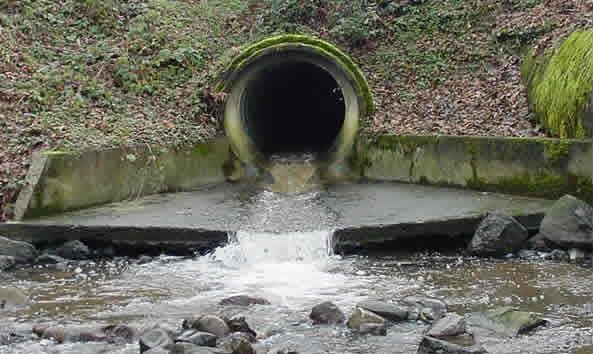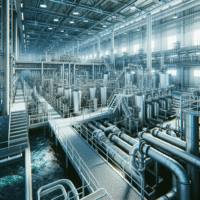AFFF Contamination Cleanup
AFFF Contamination Cleanup: Best Practices and Solutions for Environmental Safety
Introduction
In recent years, the growing concern over Per- and Polyfluoroalkyl Substances (PFAS) has put Aqueous Film Forming Foam (AFFF) contamination at the forefront of environmental cleanup efforts. With regulatory bodies increasingly cracking down on PFAS levels in water supplies, municipalities, industries, and environmental engineers must navigate the complexities of AFFF contamination cleanup. Making informed decisions today not only complies with current regulations but also protects community health and environmental integrity. This article delves into the intricacies of AFFF contamination cleanup, providing a comprehensive overview of technology, regulations, and strategies tailored to current landscape.
Understanding AFFF and Its Contaminants
What is AFFF?
AFFF is a firefighting agent that has been widely used since the 1960s, particularly in military and industrial settings, due to its effectiveness in suppressing flammable liquid fires. The foam contains fluorinated compounds that reduce surface tension, allowing the foam to spread rapidly over burning liquids.
Health and Environmental Risks
According to recent studies, exposure to PFAS—an integral component of AFFF—can lead to various health issues, including liver damage, immune system dysfunction, and reproductive harm. The U.S. Environmental Protection Agency (EPA) has identified certain PFAS compounds as hazardous, with maximum contaminant levels (MCLs) set for drinking water. The imperative to address AFFF contaminants is underscored by these health risks, making cleanup efforts both a regulatory necessity and a public health priority.
Regulatory Landscape
Current Regulations and Guidance
As of 2025, federal and state regulations have tightened significantly. Key regulations impacting AFFF contamination include:
-
EPA’s PFAS Enforcement Initiative: Launched in 2021, this initiative emphasizes compliance and monitoring of PFAS levels in drinking water systems.
-
State Action Levels: Many states have adopted their own MCLs, often more stringent than federal guidelines. For example, California has implemented a maximum contaminant level of 10 ppt for PFOS and PFOA.
-
Federal Infrastructure Law: The Bipartisan Infrastructure Law has allocated funds specifically aimed at tackling PFAS contamination, aiming for remediation projects across affected sites.
Implications for Cleanup Strategies
The intersection of these regulations influences the urgency and methods of AFFF cleanup. Entities involved in AFFF use are now under greater scrutiny, requiring proactive measures to mitigate contamination risks.
Risks Associated with AFFF Contamination
Soil and Groundwater Contamination
AFFF spills can lead to significant groundwater and soil contamination, primarily through infiltration and leaching. Groundwater sources can be affected, placing municipalities at risk of exceeding regulatory limits.
Surface Water Contamination
When AFFF is used in firefighting scenarios—especially at airports or military bases—runoff can introduce contaminants to nearby streams, lakes, and rivers. As PFAS can persist in the environment, these issues may result in long-term ecological damage.
Health Risks for First Responders and Communities
First responders involved in AFFF firefighting face elevated risks of exposure. Additionally, communities relying on contaminated groundwater face long-term health ramifications, urging prompt and effective cleanup strategies.
AFFF Contamination Cleanup Solutions
Advanced Technology for Remediation
-
Pump-and-Treat Systems: This traditional remediation technique involves pumping contaminated groundwater to the surface and treating it. While effective for some contaminant types, it can be slow and costly for PFAS.
-
Granular Activated Carbon (GAC) Filters: GAC systems can adsorb PFAS from water. Increasingly used in municipal water supply systems, these filters must be maintained and replaced regularly, highlighting ongoing operational costs.
-
Ion Exchange Technology: This method involves using resin to capture PFAS. Ion exchange systems have shown higher efficiency in removing various PFAS compounds, making them a preferred choice for several municipalities.
-
Advanced Oxidation Processes (AOPs): A combination of strong oxidants and ultraviolet light can break down PFAS in water, leading to complete mineralization of contaminants. As of 2025, publication reports indicate exciting advancements in this area, with pilot projects showing promising results.
Case Study: Successful Cleanup Initiatives
The Naval Base San Diego
A groundbreaking study by the Department of the Navy in 2024 highlighted the successful implementation of a multi-faceted AFFF cleanup plan, combining pump-and-treat methodology and ion exchange systems. As part of their initiative to remediate over 15 contaminants, including PFAS, this interdisciplinary approach led to a 70% reduction in PFAS concentrations over five years.
Municipal Efforts in Wake County, North Carolina
In Wake County, local water authorities engaged in a targeted PFAS treatment project that combined GAC filtration and regular monitoring. As a result, the area successfully reduced PFAS levels below CDC-recommended limits within just three years.
Community Involvement and Education
Effective cleanup also requires community involvement and public education, including:
- Informing residents about potential sources of contamination.
- Developing transparent communication channels regarding cleanup status and health impacts.
- Collaborating with local stakeholders to foster community engagement.
Financial Considerations
Cost of AFFF Cleanup
The financial implications of AFFF cleanup can be extensive. Estimates suggest that municipalities may spend upwards of $5 million per site for comprehensive cleanup, including technology installation and ongoing monitoring costs.
Funding Opportunities: Leveraging federal grants and state-provided funding initiatives can alleviate some financial burdens. The recent influx of funding following the Federal Infrastructure Law presents an opportunity for many communities to enhance cleanup measures.
Conclusion
AFFF contamination presents significant challenges for environmental safety and public health. With a comprehensive understanding of the regulatory landscape, emerging technologies, and case studies showcasing successful remediation efforts, environmental professionals and municipalities can take informed action. As we move further into 2025, the emphasis on AFFF contamination cleanup will only grow, emphasizing the need for robust, multi-faceted strategies that not only comply with regulations but ultimately protect communities and ecosystems. By embracing innovative technologies, fostering community engagement, and securing financial support, stakeholders can turn the tide on AFFF contamination, paving the way for safer, healthier environments.


